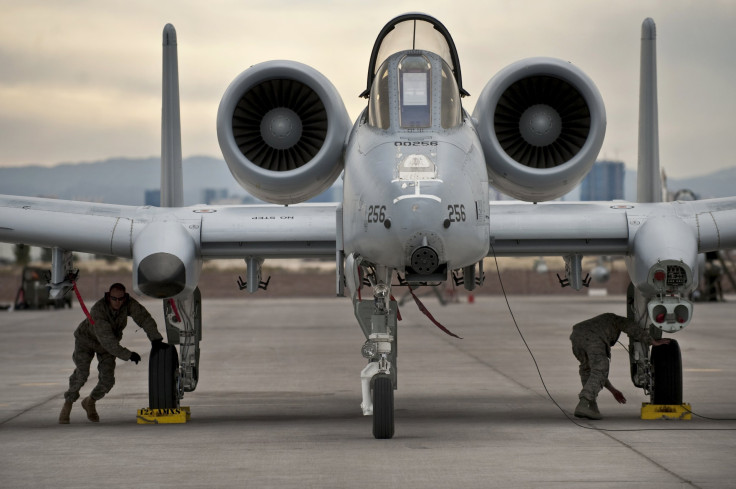US Air Force A-10 Thunderbolt In Estonia: Amid Russian Hostility, Aircraft Arrive In The Baltics

Twelve U.S. Air Force A-10 Thunderbolt aircraft arrived Monday at an Estonian air force base as part of an operation to deter Russian aggression in Eastern Europe, according to a U.S. Air Force report. The aircraft landed in the Baltic country after flying from Germany and are expected to spend the next six months training with NATO allies and other European partners.
The aircraft are originally from the 23rd Wing at Moody Air Force Base in Georgia, and are being used to augment the U.S. military's attempts to bring security and stability to Europe, according to the statement. The exercise, which is part of a cross-continental mission known as Operation Atlantic Resolve, is designed to be a show of force against Russian intimidation after the Kremlin annexed Crimea in March 2014 and continues to be involved in the eastern Ukraine conflict.
"It is an opportunity for us to represent not only Moody, but the United States Air Force, and it's a chance to come together and work with our NATO partners to strengthen our alliances," said Lt. Col. Bryan France, commander of the A-10 group. Estonia, a former Soviet republic, is a NATO member.
In April, 10 Thunderbolts deployed to Romania to assist training Soviet-built MiG-21 aircraft of the Romanian air force. Recent deployments have seen the U.S. military train with local forces in the Baltic and Balkan states, as well as Germany, Poland and Ukraine.
“The benefits to training with our NATO allies are astronomical," said France. "It's a very difficult piece ... to be able to communicate effectively with one another on the battlefield and in the battle space, so being here in Eastern Europe to train alongside those military partners will enable us to better operate on the battlefield together. It also allows us to learn from each other, which better prepares us to operate together in the future."
A-10s were based in Germany from 1994 until 2013, when the jets returned home to the U.S. as part of broad military budget cuts and force downsizing across Europe.
© Copyright IBTimes 2025. All rights reserved.






















